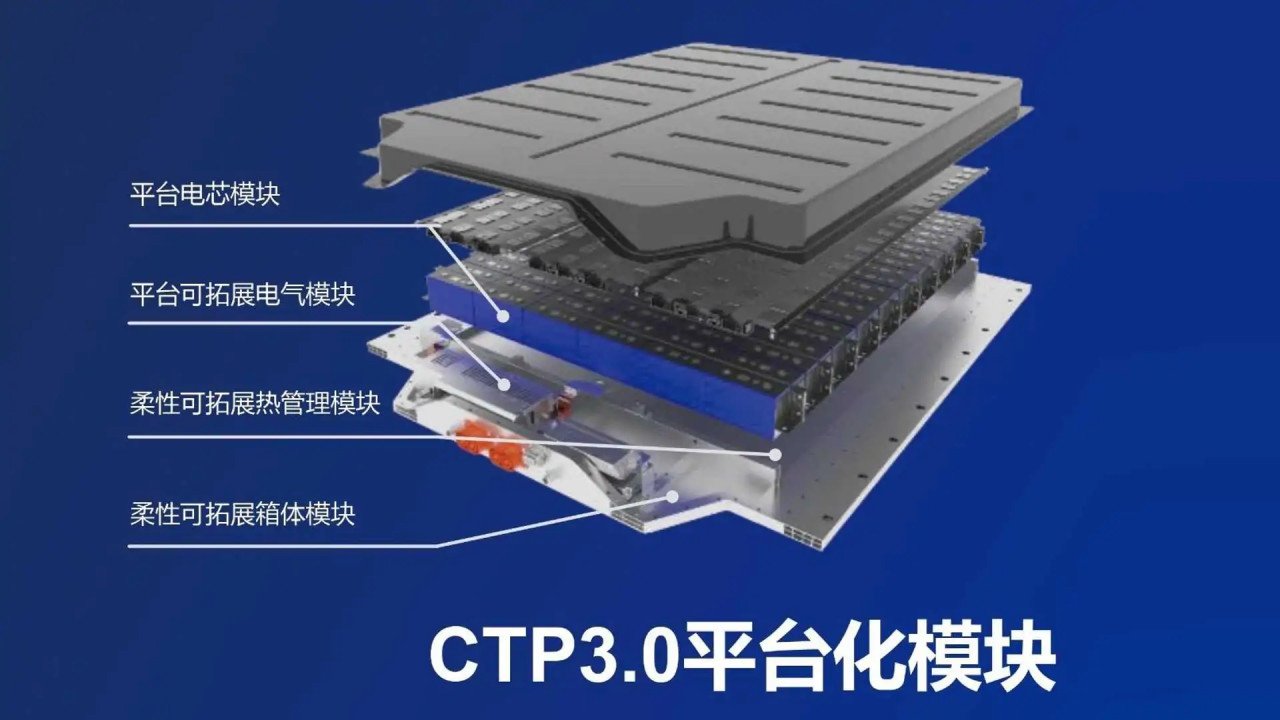Chinese battery supplier CATL has recently launched the third-generation of its CTP (cell-to-pack) battery technology. Named as 'Qilin', the advanced battery boasts a record-breaking volume utilization efficiency of 72 percent and an energy density of up to 255 Wh/kg.
The company claims that the battery achieves the highest integration level ever-achieved across the globe so far, capable of delivering a range of over 1,000 km in an EV. It is expected to go for mass production and reach global markets by next year.
In the CTP 3.0 battery, the internal crossbeam, liquid-cooling plate and thermal pad have been integrated into a multifunctional elastic interlayer. It also features built-in micron bridges inside the interlayer, which flexibly accommodate the changes inside the cell, improving the battery reliability throughout its full life cycle.
The integrated energy unit, which is composed of the cell and the multifunctional elastic interlayer, builds a more stable load bearing structure perpendicular to the driving direction, thus enhancing the shock and vibration resistance of the battery pack.
By placing liquid cooling functional parts between adjacent cells, the large-surface cell cooling technology increases the heat transfer area by four times, cuts thermal control time in half, and supports a hot start in 5 minutes and fast charging in 10 minutes.
Further, it enables the cell to cool down rapidly in extreme circumstances, effectively preventing abnormal thermal conduction among cells. CATL claims that the battery has achieved thermal stability and thermal safety for all chemical systems, making it compatible with materials with higher energy density.
With its precise computing and AI simulation capabilities, CATL says that it has explored the boundaries of battery design involving the battery's full life cycle application scenarios. The ingenious bottom sharing design allows the smart arrangement of various components including structural protection, high-voltage connection and a protective vent for thermal runaway, thereby increasing the battery capacity by 6 percent.
The manufacturer also adds that the CTP 3.0 battery satisfies the criteria of the battery safety tests required by national standards such as the bollard test.
Supported by these technological innovations, the CTP 3.0 battery can increase the energy density to 255Wh/kg for ternary battery systems, and 160Wh/kg for LFP battery systems. With the same chemical system and the same pack size, it can deliver 13 percent more power than the 4680 battery, accomplishing an all-round improvement in range, fast-charging, safety, service life, efficiency and low-temperature performance, according to the company.
Back in 2019, CATL launched the world's first module-less battery pack CTP, taking the lead in achieving a volume utilization efficiency of over 50 percent.
Read More

